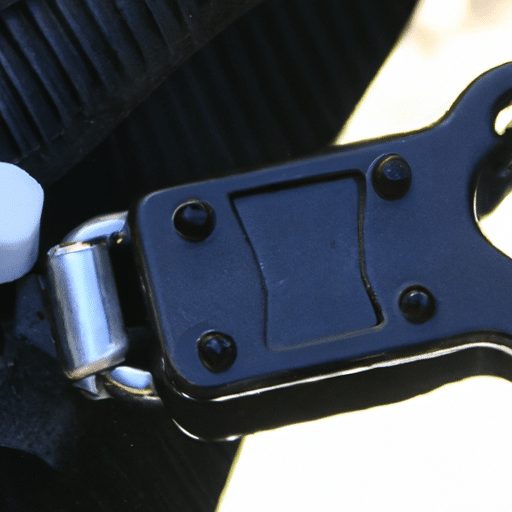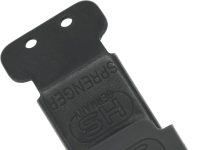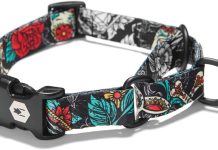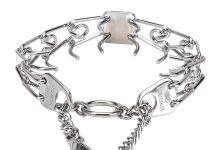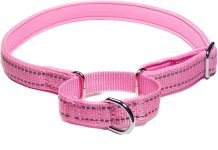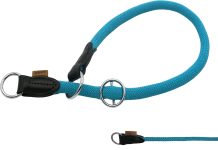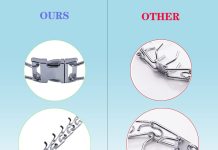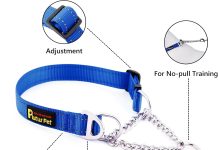Looking for a solution to stop your dog from pulling on walks? Look no further! In this article, we explore the world of dog harnesses and unveil the best one to put an end to the constant tugging and pulling. Whether you have a small dog with a lot of energy or a larger breed that loves to lead the way, we’ve got you covered. Say goodbye to sore arms and hello to enjoyable and stress-free walks with your furry friend.
Choosing the Right Harness
When it comes to choosing the right harness for your dog, there are several factors to consider. One of the most important factors is the size and breed of your dog. Different harnesses are designed to accommodate different sizes and breeds, so it’s important to choose one that fits your dog properly.
Another important factor to consider is the material and durability of the harness. You want to choose a harness that is made from high-quality materials to ensure it can withstand your dog’s movements and provide long-lasting use.
The fit and adjustability of the harness are also crucial. A harness that can be easily adjusted to fit your dog’s body properly will provide a secure and comfortable fit. It should have adjustable straps that allow for a customized fit.
Lastly, comfort and padding are essential. Look for a harness that is padded in the chest and back areas to provide maximum comfort for your dog, especially during long walks or hikes.
Types of Dog Harnesses
There are several types of dog harnesses available in the market, each with its own unique features and purposes. Understanding the different types can help you choose the best harness for your dog’s needs.
-
Back-Clip Harness: This type of harness has a D-ring located on the back, which allows for easy attachment of the leash. It is a common choice for dogs that do not pull excessively and need freedom of movement.
-
Front-Clip Harness: A front-clip harness has a D-ring located on the chest area. This design helps to steer your dog to the side when they pull, discouraging pulling behaviors. It provides better control and is particularly effective for dogs that tend to pull on the leash.
-
No-Pull Harness: As the name suggests, a no-pull harness is specifically designed to discourage pulling behaviors in dogs. It usually features a front-clip attachment and additional control points for better management of pulling.
-
Head Halter or Gentle Leader: This type of harness fits around the dog’s muzzle and neck, providing control over their head. It is effective in redirecting the dog’s attention and discouraging pulling.
-
Tightening or Martingale-Style Harness: A tightening harness has a design that tightens around the dog’s chest when they pull, discouraging pulling behaviors. This type of harness should be used with caution, as improper use can cause discomfort or injury to the dog.
Features to Look For
When choosing a dog harness, there are several features to look for to ensure your dog’s safety and comfort.
-
Front Attachment Point: A front attachment point on the harness allows for better control and discourages pulling behaviors by redirecting the dog’s attention.
-
Back Attachment Point: A back attachment point is suitable for dogs that do not pull excessively and need more freedom of movement during their walks.
-
Control Handle: A harness with a control handle located on the back allows for easier control of your dog in situations where you may need to keep them close or guide them.
-
Reflective Material: Choosing a harness with reflective material can enhance visibility during nighttime walks, making it safer for you and your dog.
-
Easy-to-Use Buckles and Clips: Look for a harness with buckles and clips that are easy to use and secure. This will save you time and ensure the harness stays securely in place.
-
Adjustable Straps: A harness with adjustable straps ensures a proper and comfortable fit for your dog, regardless of their size and breed.
-
Padded Chest and Back Panels: Padded chest and back panels provide extra comfort for your dog, especially during longer walks or hikes.
-
Breathability and Ventilation: A harness with breathable and ventilated materials helps to prevent overheating and provides comfort during hot weather.
Recommended Dog Harnesses
Based on customer reviews and expert recommendations, here are some highly recommended dog harnesses:
-
Rabbitgoo No-Pull Dog Harness: This harness features both front and back attachment points, adjustable straps, and a control handle. It is designed to discourage pulling behaviors.
-
Freedom No-Pull Dog Harness: The Freedom harness has a dual-clip design, allowing for both front and back attachment. It also has adjustable straps and a control handle for better control and comfort.
-
Chai’s Choice Best Front Range Dog Harness: This harness has a front attachment point, adjustable straps, and reflective materials for enhanced visibility. It is designed to be comfortable and secure.
-
Kurgo Tru-Fit Smart Dog Walking Harness: The Kurgo harness is made from durable materials and features a front attachment point, adjustable straps, and a control handle. It is designed to provide a secure and comfortable fit.
-
Embark Adventure Dog Harness: This harness is made from high-quality materials and features adjustable straps, a front attachment point, and a control handle. It is designed for durability and comfort during outdoor adventures.
Training Tips for Leash Walking
Using the right dog harness is just one part of the solution to stop pulling. Proper training and techniques are essential to teach your dog to walk politely on a leash.
-
Positive Reinforcement: Use praise, treats, and rewards to reinforce good behavior and encourage your dog to walk calmly beside you.
-
Start with Short Sessions: Begin with short, manageable walks and gradually increase the duration as your dog becomes more comfortable and familiar with the routine.
-
Use Treats and Rewards: Reward your dog with treats or rewards when they walk calmly beside you, ignore distractions, or respond to your commands. This positive reinforcement helps reinforce good behaviors.
-
Redirect Your Dog’s Attention: If your dog starts to pull or gets distracted, gently redirect their attention back to you using verbal cues or treats.
-
Consistency and Patience: Consistency is key when training your dog. Use the same commands and techniques consistently, and be patient as your dog learns.
Common Mistakes to Avoid
To ensure the success of your leash training and harness usage, it’s important to avoid common mistakes that can hinder progress.
-
Choosing the Wrong Size or Type of Harness: Selecting the wrong size or type of harness can lead to discomfort or ineffective control. Take the time to measure your dog properly and choose a harness that suits their size and needs.
-
Improper Fit and Adjustment: A poorly fitted harness can lead to discomfort, chafing, or potential escape if your dog can slip out. Follow the manufacturer’s guidelines for fitting and adjusting the harness properly.
-
Neglecting to Properly Introduce the Harness: Some dogs may be apprehensive about wearing a harness. Introduce the harness gradually, allow them to sniff and explore it, and provide positive reinforcement when they accept and wear it.
-
Inconsistency in Training: Consistency is crucial in training your dog. Stick to the routine, commands, and techniques you have established to reinforce good walking behavior.
-
Using the Harness as a Quick Fix: A harness alone cannot solve pulling issues overnight. Training, patience, and consistency are necessary to help your dog learn proper leash manners.
Harness Safety and Maintenance
Ensuring the safety and maintenance of your dog’s harness is crucial to their well-being.
-
Regularly Inspect the Harness: Check the harness regularly for any signs of wear and tear. Look for frayed straps, loose stitching, or any damage that may compromise the harness’s integrity.
-
Clean and Maintain the Harness: Follow the manufacturer’s instructions for cleaning the harness. Some may be machine washable, while others may require hand washing. Regular cleaning helps prevent odors and maintains the harness’s functionality.
-
Properly Secure All Buckles and Clips: Before each walk, check that all buckles and clips are securely fastened. Loose or faulty fastenings may result in the harness coming undone during a walk, compromising your dog’s safety.
-
Use a Harness in Combination with a Collar: While a harness is generally safer and more comfortable for walking, it is important to have identification tags and a collar on your dog at all times. In case the harness fails, the collar can serve as a backup form of identification.
-
Consult Your Veterinarian: If you have any concerns about your dog’s comfort or safety in a harness, consult your veterinarian. They can provide guidance on the best options for your dog’s specific needs.
Conclusion
Choosing the right harness for your dog is an important decision that can make a world of difference in leash walking. Consider the size and breed of your dog, assess the material and durability, evaluate the fit and adjustability, and check for comfort and padding. Additionally, understand the different types of harnesses available and their specific features. With the right harness and proper leash training techniques, you can enjoy pleasant walks with your furry companion while ensuring their comfort and safety. Remember to avoid common mistakes, regularly inspect and maintain the harness, and consult your veterinarian if needed. Happy walking!

